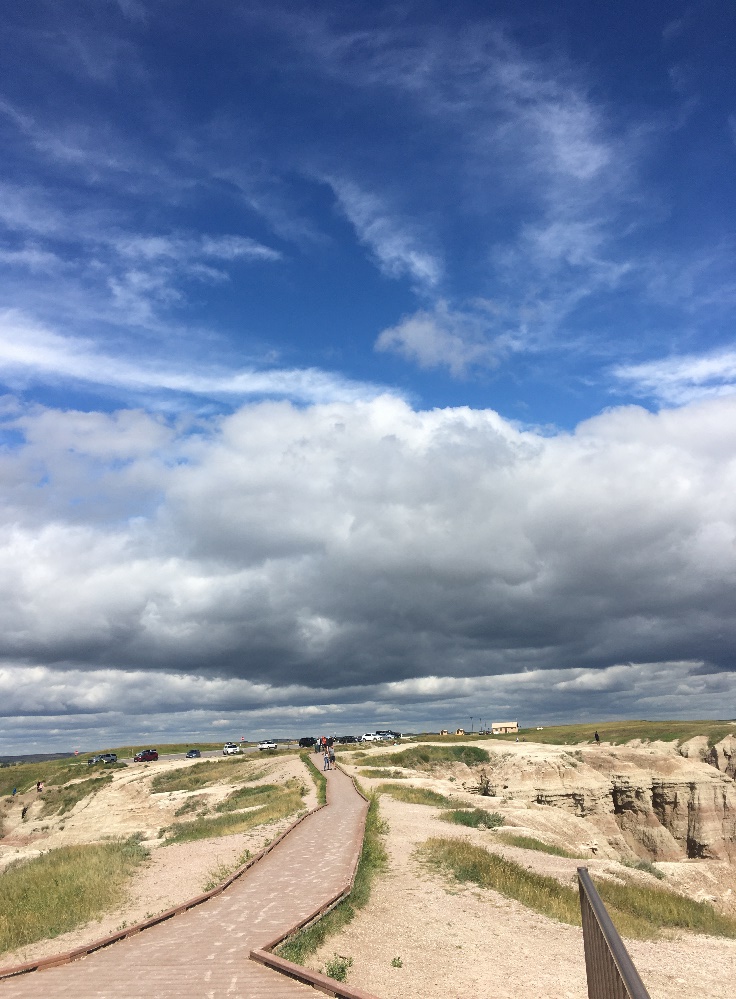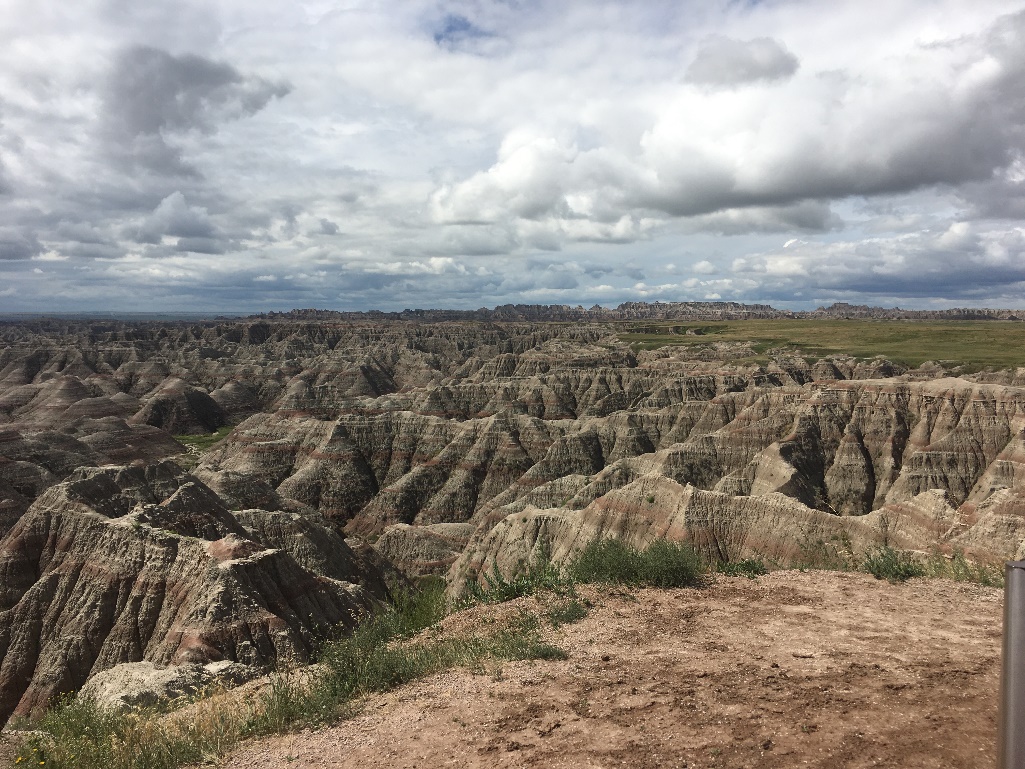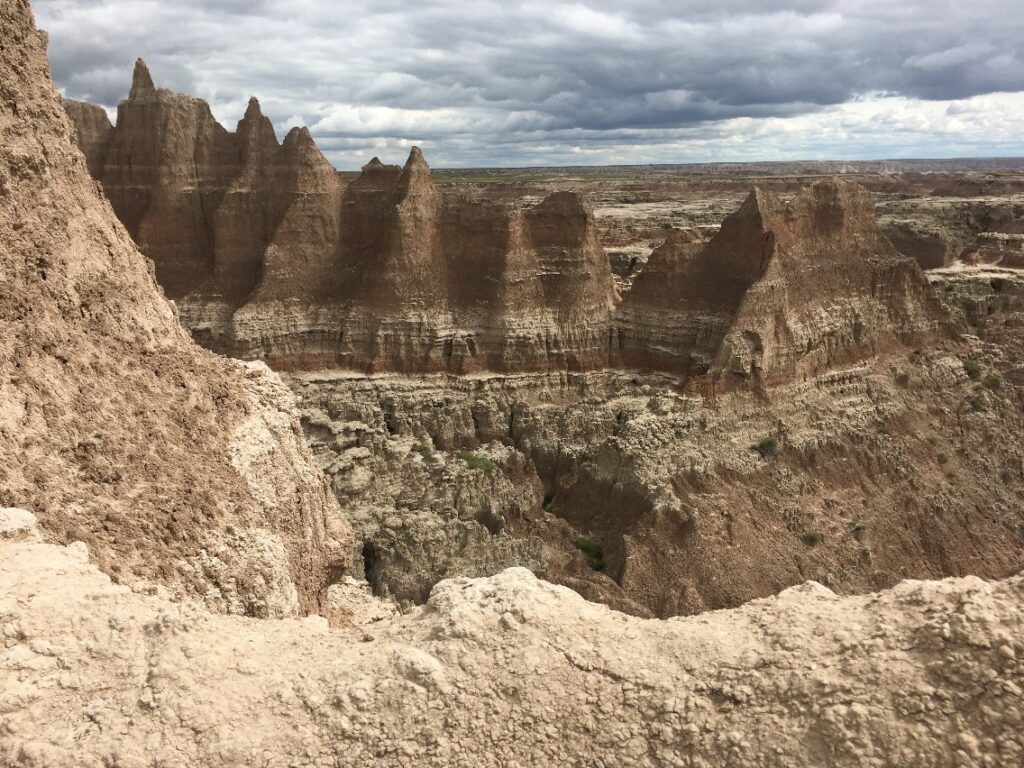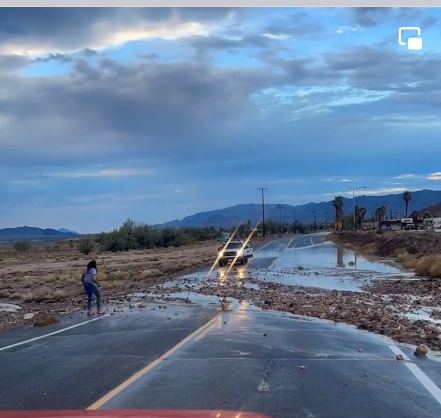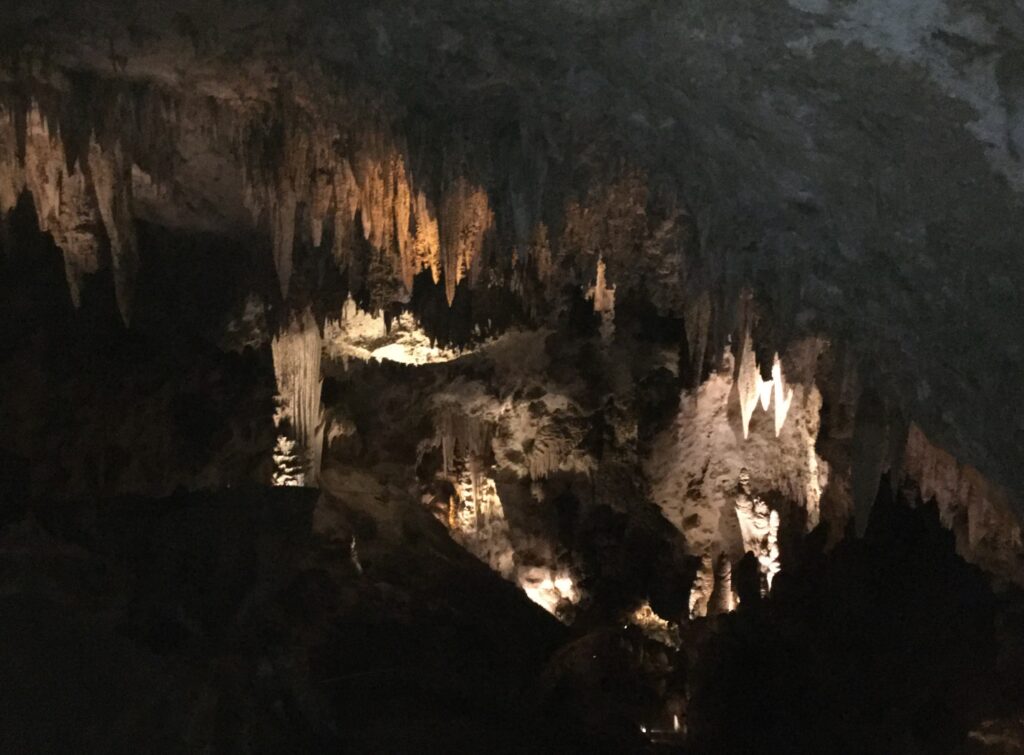The Name:
Badlands National Park is a place with a fascinating history. The name “badlands” is said to have originated from the Canadian French fur traders phrase les mauvaises terres, which means “bad lands to travel through.” Another theory suggests that the Lakota people, who moved to the area in the late 1700s, named the land mako sica, which means “bad land” or “eroded land.” Regardless of the origin, the challenging terrain has resulted in breathtaking views that are truly awe-inspiring.
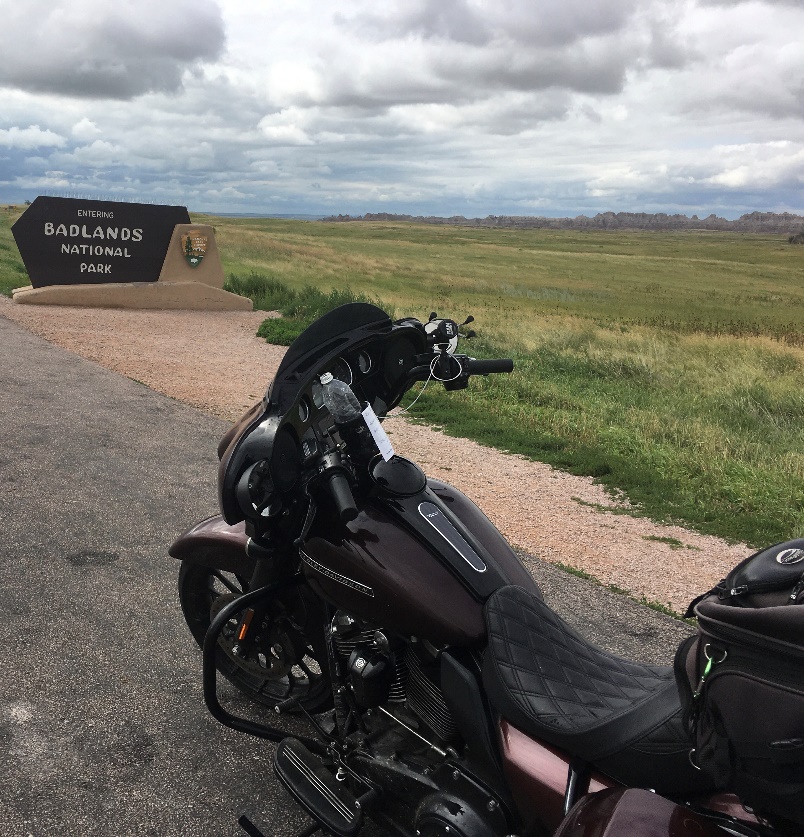
The Location:
The Badlands National Park, South Dakota located in a part of our country that is less than 100 miles of many wonderful parks and sights to see. This region of South Dakota consists of two parts, as its name implies: the Badlands, with canyons and rugged terrain; and the Black Hills, a mountain range with forests and the famous Mount Rushmore, Custer State Park, which includes a must-do Needles Highway, Crazy Horse Memorial, just to name a few.
There are three entrances to the Badlands National Park as follows; Northeast Entrance (I-90, Exit 131): off Hwy 240, The Pinnacles Entrance (I-90, Exit 110): on Hwy 240, Wall, SD and Interior Entrance: 20640 SD Hwy 377, Interior, SD.
One Day Itinerary:
I went through the Pinnacles entrance after a quick stop at Wall, SD home of the infamous Wall Drug. The first stop in the park is the Ben Reifel Visitor Center, where you can get answers to your questions from rangers at the information desk, obtain maps, provide directions and local area orientation, hand out Junior Ranger booklets, and answer any questions you might have about earth science, wildlife, history, and more. In this building, visitors may also explore museum exhibits, and visit a working Fossil Preparation Lab. After a brief and informative conversation with the park ranger, I have identified the plan for the day.
The Badlands Scenic Loop Road is a 31-mile two-lane scenic drive that offers breathtaking canyon views and many spots to stop and hike or simply enjoy the stunning scenery. Along the way, you’ll find numerous overlooks that provide an opportunity to learn about the natural and human history of the area. Most overlooks are worth a stop as they offer a stunning view of the landscape. Besides, easily accessible trailheads and the colorful Yellow Mounds and Roberts Prairie Dog Town make the drive even more appealing. Unfortunately, during my ride, I didn’t get to see many prairie dogs, as they might have been underground trying to cool off. Nonetheless, the drive is worth experiencing, and you’re likely to stop several times to make the most of your scenic journey.
Fossils
The Fossil Preparation Lab, located in the Ben Reifel Visitor Center, is typically open from It’s open to visitors from 9 a.m. to 4:00 p.m. daily from Memorial Weekend through early October 9:00 a.m. to 4:30 p.m. This is a working paleontological laboratory where you observe paleontologists in action. The Fossil Preparation Lab is the only lab in the National Park Service system.
In the Fossil Preparation Lab, park paleontologists and interns perform the amazing work of fossil preparation. This includes identifying species based on fossil characteristics, removing rock from fossils, and preparing and cataloging finished specimens for display. You can also ask rangers and paleontologists questions about this exciting work.
History:
Badlands Fossils according to scientists, are from a time somewhere between a geologic epoch that lasted from 23 to 35 million years ago. Though seemingly inhospitable at first glance, the Badlands have supported humans for more than 11,000 years. The earliest people to come here were ancient mammoth hunters.
The Arikara were the first known tribe to inhabit the area before the Lakota, then came along other explorers such as fur trappers, soldiers, miners, cattle farmers, and homesteaders. After 40 years of struggle, the Lakota were confined to reservations, and the prairie was transformed by the replacement of bison with cattle, prairies with wheat fields, and horses with gasoline-powered vehicles.
Benjamin Reifel, also known as Lone Feather, was the first Congressman elected with Lakota heritage, representing South Dakota’s 1st congressional district. Mr. Reifel belonged to the Brule (or Burnt Thigh) tribe. He was also the only Native American Congressman during the 1960’s. He served five terms from 1961-1971
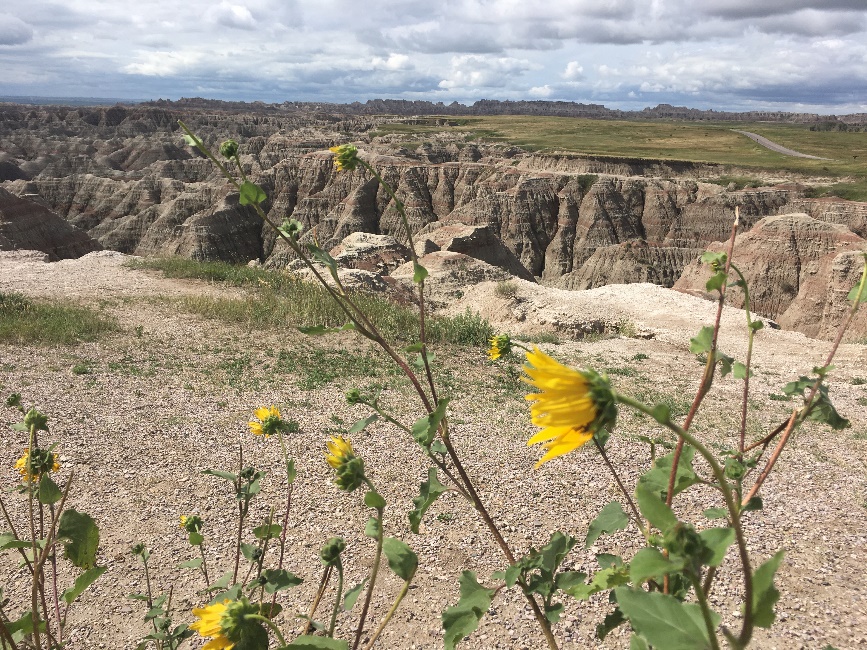
Thaddeus Culbertson Quote:
Paleontologist Thaddeus Culbertson is quoted as saying “Fancy yourself on the hottest day in summer in the hottest spot of such a place without water without an animal and scarce an insect astir-without a single flower to speak pleasant things to you and you will have some idea of the utter loneliness of the Bad Lands.”
As I travel through the Badlands and reflect on the quote, I’m reminded that it is our individual perspective that shapes our reality. What may seem lonely to one person can be an opportunity for serenity and inner peace for another. Badlands, and the South Dakota Black Hills with their vast open space and stunning views that change when shadows are cast upon the infinite peaks and valleys, its contrast of desolation, to wildflowers and the abundant wildlife, it is at those moments when the area and all it has to offer provide stillness to the soul.
